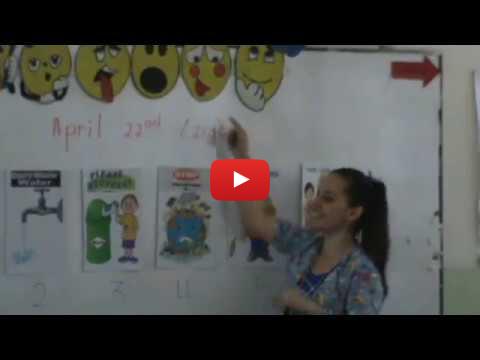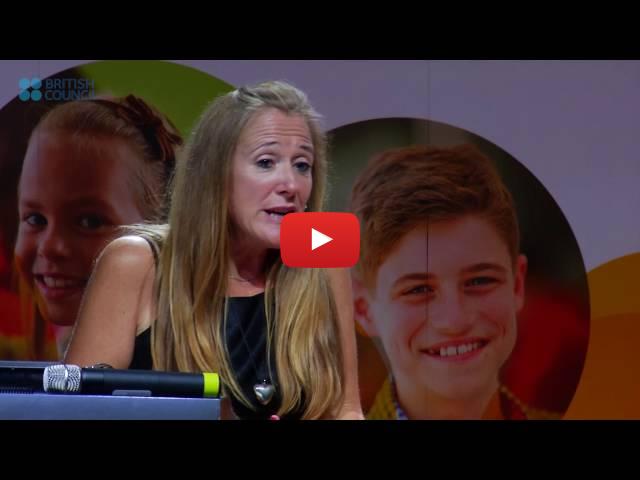Greetings to everyone Would you like to make your lessons more engaging? Are your students keen on exploring the world and discovering something new? Then it is high time you started teaching CLIL lessons. Content and Language Integrated Learning (CLIL) describes both learning another subject such as physics or geography through the medium of a foreign language and learning a foreign language by studying a content-based subject. In today’s newsletter, you will find out about the principles of CLIL methodology and the CLIL lesson framework.   
CLIL in young learners’ classroom ‘I am … a cucumber,’ said one of our colleague’s English-speaking students in French to a farmer in a small market square in France. The student was on an exchange programme. ‘Well, you’re the first talking cucumber I’ve met in 20 years of farming,’ quipped the farmer, huskily. Seeing the blank look on the youngster’s face, the farmer asked slowly in French, ‘So you want a cucumber?’ And the student answered, ‘Yes, I want a cucumber, please.’ (Taken from Uncovering CLIL: Content and Language Integrated Learning in Bilingual and Multilingual Education by Peeter Mehisto, David Marsh & Maria Jesus Frigols) Parents and teachers certainly do not consider language learning incidental. However, in many ways it is incidental to the students. They are above all interested in the subject content, not the vocabulary or the mechanics of language. For students, language is a means to an end. A small dialogue between a student and a French farmer happened as a result of an exchange programme and despite or thanks to the mistake it became meaningful. The English-speaking student was clearly happy to have been able to make use of his French. Every day young learners explore the world and discover something new. Why not create a friendly atmosphere for such discoveries in the classroom using CLIL methodology? WHAT IS CLIL? CLIL stands for Content and Language Integrated Learning. CLIL is the term used to describe the methodology of teaching a foreign language through another subject (content). Through this method, language is used to learn as well as to communicate and it is the subject matter that determines what language needs to be learnt. CLIL refers to teaching subjects such as Science, History, Geography, Art and Craft, Music, Physical Education and English Literature to students through a foreign language. This can be achieved either by the English teacher using cross-curricular content or by the subject teacher using English as the language of instruction. Both methods result in the simultaneous learning of content and language. A CLIL lesson is therefore not a language lesson neither is it a subject lesson transmitted in a foreign language. According to the 4Cs curriculum (Coyle 1999), a successful CLIL lesson should combine elements of the following: - Content – the knowledge, concepts and skills of the discipline, e.g. Science, IT, Arts etc..
- Communication – using language to learn whilst learning to use language, e.g. giving instructions, stating facts, asking questions, sharing ideas, role-playing etc.
- Cognition – developing thinking skills which make sense of knowledge, experience, and the world around us, e.g. remembering, evaluating, comparing etc.
- Culture – the interaction and engagement with the world around us, e.g. being able to understand themselves and other cultures, becoming aware of the responsibilities of global as well as local citizenship etc..
LESSON FRAMEWORK Usually, course books contain special units devoted to some CLIL topics like Math or Science, etc. They are often used as additional exercises to practice topical materials a little bit more, but it’s also possible to conduct a separate lesson based on such activities. A typical lesson plan could include the following: Watch the video below. It is a Demo class with the third grade using CLIL. Try to follow and see what stages it has. 
LET’S DO IT! Would you like to try creating your own CLIL lesson? Here are some simple steps to help you plan it: STEP 1. Choose an interesting topic. It might be a Science lesson or a History lesson. STEP 2. Choose the target vocabulary. These may be 6 to 10 words depending on the level of your students. STEP 3. Choose a grammar structure to focus on. STEP 4. Choose a reading text / a video. It should match the level of the students and include your target vocabulary and grammar. STEP 5. Create a graphic organizer that allows the students to think critically and analyze the information they have learnt. STEP 6. Let the students use the information creatively. This will personalize what they have learnt. CLIL spices up daily teaching. It is more motivating and provides a wider variety of stimuli for a broader range of learners. It gives them exposure to English in a natural way. Finally, it does not require extra teaching time. Need more ideas for your CLIL lessons? Click the links below: Easy CLIL ideas for the young learner classroom Young learners resources for CLIL CLIL young learners lesson observation and teaching techniques Using CLIL to keep young learners engaged CLIL: A lesson framework We highly recommend watching Rebecca Place, a teacher trainer from British Council Bilbao, speaking about Activating CLIL: Putting Theory into Practice. 
  

Workshop “TBL — how to bring the real world into your lessons?” Don't miss a chance to join a workshop “TBL — how to bring the real world into your lessons?” from our experienced academic director Alona Trygub Task-based learning is a very proactive approach that allows your students to use genuine and authentic language with a focus on meaning and communication. On February 16 Alona Trygub will show you two lesson frameworks of TBL and her favorite task-based activities in which your students have to work together and speak a lot resolving meaningful tasks. Workshop "DEC as a teacher’s magic wand" from Liubov Doronina We invite you to our workshop on February 16 where you can take a closer look at delayed error correction with our highly professional teacher Lyubov Doronina Join us on February 16 and you’ll make sure DEC can be a magic wand for everyone. Register online Date: 16/02/2020 Price: 399 UAH Location: Grade Education Centre, 13/2-b Yaroslaviv Val, Kyiv |